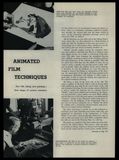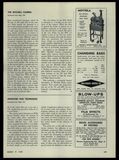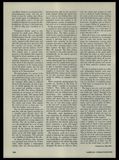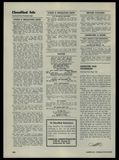



Inking and painting – final stages of cartoon animation
AFTER THE CELS hove been inked, the separately outlined areas of the characters, etc., are painted according to a precisely worked-out color plan that insures uniformity of colors throughout the production.
IN THE PRODUCTION of an animated cartoon for theatre release, where a coordinated, systematic method of production prevails, the cartoon goes into the home stretch as soon as the cleaned-up animation drawings receive the ‘O.K. for Inkers.”
All the drawings are now delivered to the Inking Department, where they are first subjected to a final checkup to make sure that the mechanics of the scene are correct, i.e. all drawings are in their proper order, numbered correctly, and camera and pan moves accurately detailed, etc. “Inking” literally implies tracing the animation drawings onto celluloid with India ink. However, inking is more than simply tracing. It is really a re-drawing of the character. The inker must transpose the animation drawing onto celluloid, retaining as much of the freedom, construction and spontaneity of the original as possible. This calls for much more skill than just the ability to trace. It’s no cinch to swing a smooth, even pen line across a slick “cell” and accurately follow the outlines of the pencil drawing. A deviation of only the thickness of a pen line may be enough to destroy the feeling or construction of the drawing. An examination of the inked cell being painted in the accompanying illustration will indicate to what extent a good inker is able to retain the feeling and expression of the original animation drawing.
All inking is done on the front side of the cells. The paint is applied on the back. Inkers work on boards fitted with registering pegs that fit the punch holes in the cells and animation drawings. For the average cartoon, black ink is used to outline the drawing, but in a picture such as “Bambi,” where more realism and roundness in the characters was desirable, a grey outline was used. Black outlines and the flat tones of the cell paint impart a one-dimensional, “cartoony” feeling to the characters which tends to be inconsistent with the halftones of the background. This aspect isn’t too obvious ordinar: but in “Bambi” the desire for realism and a convincing characterization took precedent over accepted cartoon technique.
[…]